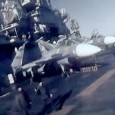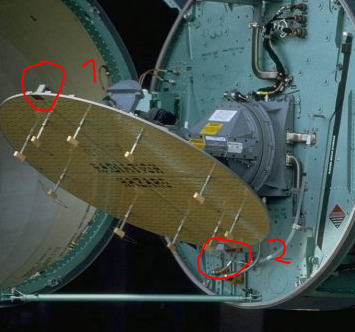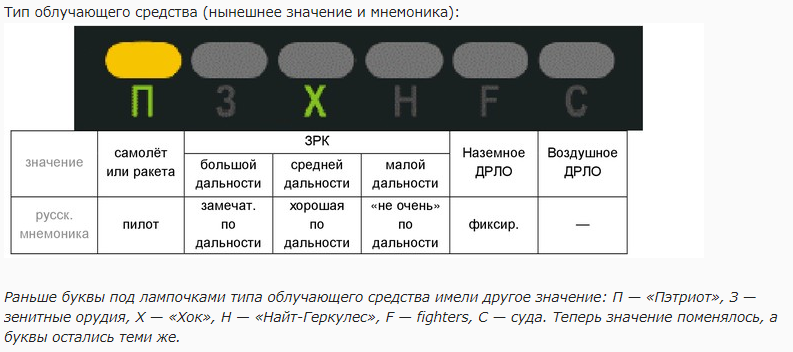-
Posts
939 -
Joined
-
Last visited
Content Type
Profiles
Forums
Events
Everything posted by BlackPixxel
-
Regarding R-27ER top speed, it is a bit higher because ED switched to an incorrect rocket motor configuration of just 8 s burntime with a very strong sustain. ED went with a third party source instead of the real manual, so we have just 8 s of burntime instead of 8.6 - 11 s.
-
Maybe there was no closure rate indicator on the early ones. Here is footage from what seems like a simulator mode from a more modern one (with R-77 capability). https://www.youtube.com/watch?v=WiMHBxSp6f0&t=1107s Closure rate appears to be the vertial line to the right of the right radar gimbal boundary. And to the right of it is its numerical value. On Su-27 the closure rate is indicated using an arrow pointing from the right onto the right radar boundary.
-
And it is for the whole front hemisphere, not just for perfect head on target.
-
Yeah, sure.
-

Su-27 / Su-33: No Radar when inverted below 1500m
BlackPixxel replied to BlackPixxel's topic in DCS: Flaming Cliffs
The compensation antenna is not causing the issue (even when inverted it covers the ground). It is about the roll stabilisation of the antenna (gimbal goes +/- 120° on roll). -
16 GB. It is may 2 seconds or so. Just had it again on a server while landing in the dark. From EOS I knew that there was an aircraft on the taxiway next to me. I could not see it, but as I drove by my game froze twice for a short moment. So I knew that it was an F-14. Opening the F-10 map confirmed it.
-
Considering how bad russian/soviet missiles are, that doesn't mean much.
-
Hi! When I get close to a F-14 (not more than a few hundret meters), my DCS will freeze for a few seconds while the F-14 is loading. I don't have this issue with any other aircraft in DCS. I suspect that it is caused by insufficient optimization of the LOD/textures. I have DCS on a fast M.2 SSD, so it is unlikely to be caused by a slow harddrive. It would be nice if that issue could be looked at, as it is very frustrating, especially if it happens during a close fight. Thank you!
-

Su-27 / Su-33: No Radar when inverted below 1500m
BlackPixxel replied to BlackPixxel's topic in DCS: Flaming Cliffs
No, during the illumination periods it is 30 ms of CW with some frequency modulation for the radio correction signal + additional commands. Not pulsed at all. -

Su-27 / Su-33: No Radar when inverted below 1500m
BlackPixxel replied to BlackPixxel's topic in DCS: Flaming Cliffs
R-27 is discrete continuous CW, at least the R-27R1. It still uses the doppler for velocity gating. -

Su-27 / Su-33: No Radar when inverted below 1500m
BlackPixxel replied to BlackPixxel's topic in DCS: Flaming Cliffs
No, these russian radars don't have a dedicated CW antenna, they time-multiplex the radar operation and the target illumination. It is roughly 20 ms of radar operation followed by roughly 30 ms of target illumination, and then the cycle repeats. This is why it is called a discrete continuous CW. The yellow antenna on the russian radars really is for sidelobe compensation. The antenna in your picture also has one or two of those horn antennas for sidelobe compensation. -
-
[100☭] BlackPixxel - Red Ka-50
-
I think the use of the antenna as gyro is what prevents it from having better trajectories. It has to fly in such a way that the stabilized antenna points at the target when it is within SARH distance. For a loft it would have to point the antenna below the target during launch, and to then keep an efficient trajectory would require more complicated circuitry.
-
What is the difference? I only saw a different PN coefficient in the homing phase here (3 instead of 4 as in the MiG-29b book).
-
Also look at this section: The missile adds 0.7 g to the required overload for the two control surface planes to counter the gravity in level flight. 0.7 g because the control planes are tilted by 45° (X-shape of the butterfly surfaces when looking at the missile from the front during flight) and the resulting projection of the gravity. So for a target that flies directly to the missile at the same altitude, the missile will have a constant overload of 1 g.
-
@tavarish palkovnik The formulas for the guidance are described quite well in the MiG-29b book. The "modified" part of the proportional guidance is just the addition of a term that depends on the difference of angular rate of the line of sight to the target and the angular rate of the missile itself. I marked in red the term of the normal proportional navigation and in blue the additional term (modification). In formula 4.2 it is for the active homing phase, and in 4.3 it is for the inertial phase. Look at formula 4.3, because the stabilized antenna and "equisignal direction" makes things easier to understand: How would they result in the lofted trajectories you described? The missile tries to minimize l_z and l_y, which are the projections of the targets position onto the stabilized seeker plane, and it tries to minimize the derivatives of those values, which are the projection of the velocity of the target onto those planes. For a head on target at same altitude, when those values are 0, the missile will fly a straight path directly into the target, without lofted trajectory. I think the modified guidance from your other documents is something different.
-
@Chizh What is the reason for the R-27 doing pure pursuit in HOJ? That does not make much sense to me.
-
R-77 was developed at the same time as the R-37, which has a loft. Why should the R-77 not have a loft? Why should a missile be developed with much less range than the one it is going to replace (R-27ER)?
-
All I can find is that the radio correction signal, when it is coming from a MiG-29, has a range of 50 km to the R-77. So at the moment the R-77 activates its own seeker (range of about 15 km against fighters), it can be 50 km away from the MiG-29. Which is massive and not a limitation at all. Especially when considering that the range of the radio correction signal for the R-27 is only given with 25 km from the launch aircraft.
-
So you think the real R-77-1 will not loft too? Main drawback of the R-77 in DCS is the lack of loft. With loft it would be alot more usefull.
-
Any idea why it is doing both? Seems like the datalink would be the better choice, as it allows to engage targets beyond the detection range of the target reflection with the missile seeker.
-
Never said that there is no datalink, just that the midcourse guidance is done based on reflections of the target.
-
No: http://www.designation-systems.net/dusrm/m-54.html The Aim-54A looks at the target reflection from the TWS sweeps of the fighter radar for SARH homing in the midcourse phase. Then it switches to ARH once close enough. It is not steered by datalink. Anyway, the CCM value of the Aim-54A is a joke for such an old missile. Absolutely not consistent with the rest of the DCS missiles.








